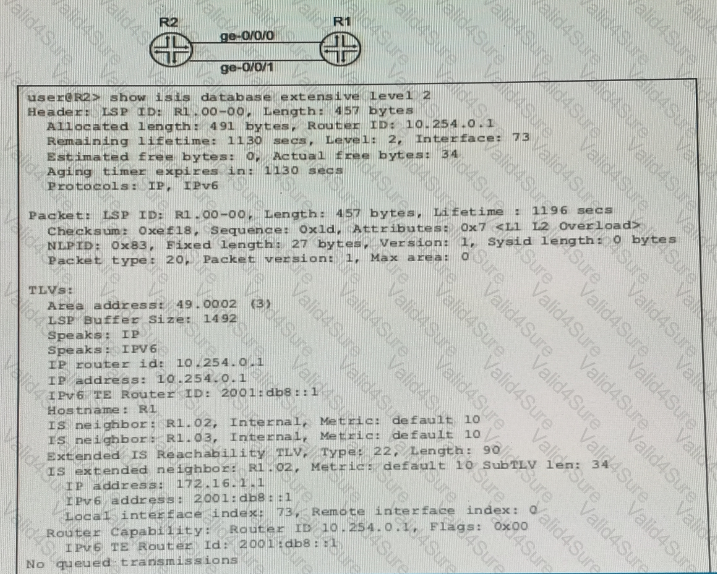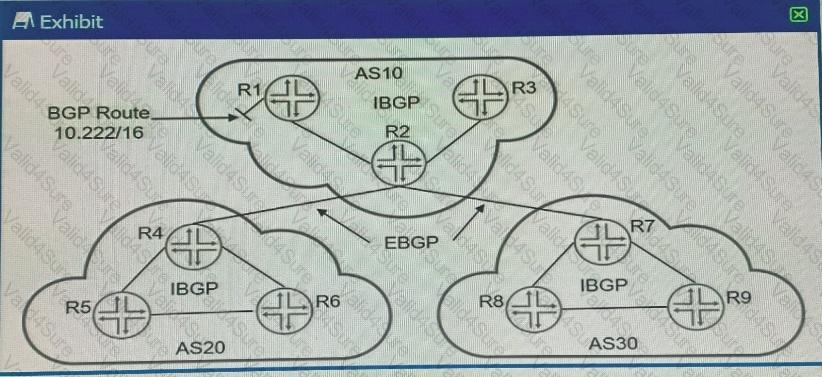JN0-663 Exam Dumps - Service Provider Routing and Switching. Professional (JNCIP-SP)
The link between CE1 and PE1 has a history of flapping To avoid the impact that flapping causes to the network you decide to use route damping
Which statement is correct in this scenario?
Click the Exhibit button.

A network administrator is investigating why traffic from R2 is not being forwarded to R1
Referring to the show isis database command output shown in the exhibit, what is causing this problem on the network?
Exhibit:

Referring to the exhibit, which three statements about route 10.222/16 are correct when using the default BGP advertisement rules? (Choose three)
You are establishing a Layer 3 VPN between two PE devices Currently you have a single internal IPv4 BGP peering between the PE devices. You must ensure that the IPv4 and IPv6 routes from both CE devices are exchanged between these sites
Which two statements are correct in this scenario? (Choose two.)